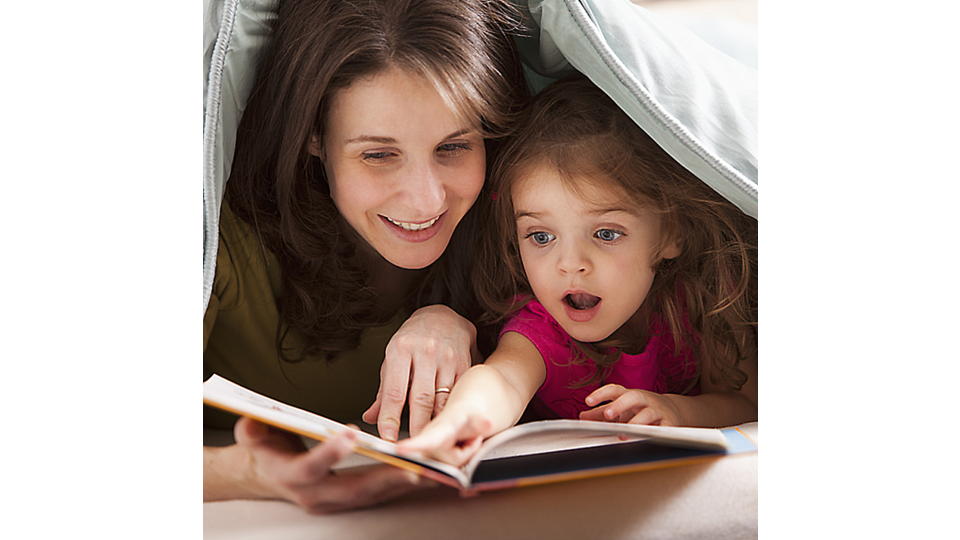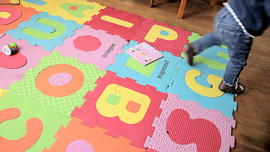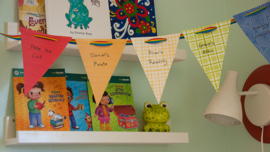Welcome to National Reading Month

Learn how to get more from every moment with tips from our literacy expert Dr. Carolyn James.
Reading aloud with your child matters
According to a study from Reading Is Fundamental (RIF) and Macy’s, only 33% of parents read bedtime stories daily with their children. Yet, additional studies show that reading aloud to your child is the most important thing you can do to help build skills for future reading success.**
As children listen to books read aloud, they are building vocabulary, learning about the sounds and rhythms of language, and developing a sense that reading is an enjoyable, worthwhile activity that fosters imagination and creativity. Plus, it’s hard to deny the powerful bonding moments created as you read to your child.
Reading Month is an excellent time to get into a family reading routine—a habit well worth keeping to nurture your child’s success. As you make time to read aloud this month, keep in mind that how you read and what you read can make a significant difference in boosting those budding skills. Here are some tried and true strategies for your book time together.
Building a range of reading skills
Exposing children to many types of texts helps build their vocabulary and understanding of how print works. Introduce your child to different types of books and use these tips to build a range of reading skills:
Narrative Storybooks. Storybooks help children learn how stories are put together. As children begin to recognize that stories have characters, a setting and a sequence of events that create a beginning, middle and end, they can use this knowledge of story structure to help them comprehend new stories. Tip: Summarize what you’ve read. After sharing a story, ask your child to recall the names of the characters, the general setting, and the events that happened first, in the middle and at the end.
Pattern Books. Pattern books use rhyme, repetitions and refrains to make the text predictable. They invite children to make predictions about words, phrases, events and characters that could come next in the book. Tip: Practice a proven reading strategy: making predictions. Point out how the book follows a pattern, with just a word or phrase changing on each page. Encourage your child to read along, using the story and illustrations to predict the new word or phrase that fits in the pattern.
Rhyming Books. Rhyming books can help children learn about the sounds of language and build phonological awareness. Phonological awareness, the ability to recognize and manipulate the sounds in spoken words, is strongly related to later reading achievement. Tip: When you read rhyming books together, you can help build your child’s sensitivity to the sounds that make up our language. Take opportunities to pause and let your child complete a rhyming phrase or come up with additional rhyming words, even silly ones!
Informational Books. Books that include information about the world allow children to follow their natural curiosity as they recognize how they can learn from reading and build awareness that print carries meaning. Tip: As you read, have your child repeat new vocabulary words and ask questions that help your child make predictions and read between the lines (e.g., why do you think the bird built its nest in that tall tree? Do you think we would see any penguins as we walk to school?)
* http://www.rif.org/us/about/press/only-one-in-three-parents-read-bedtime-stories-with-their-children-every-night.htm
**Bus, A.G., M.H. van Ijzendoorn, & A.D. Pelligrini. 1995. Joint book reading makes for success in learning to read: A meta-analysis on intergenerational transmission of literacy.
Review of Educational Research 65: 1–21.













